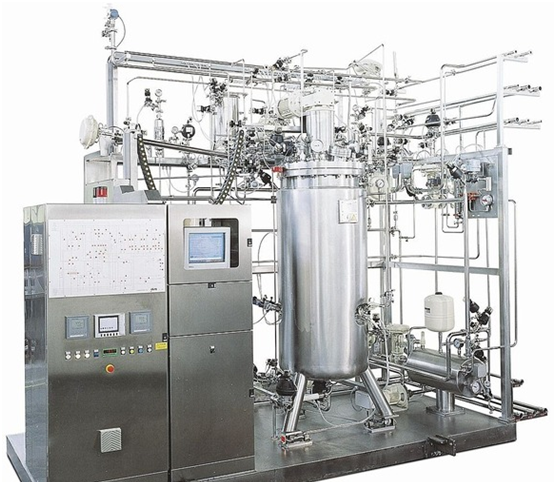Fermentation media is simply defined as those preparations that support the growth of microorganisms used in a fermentation process. The fermentation media used for the operation of fermentation processes in the industry are usually in the liquid phase or solid state. Thus, liquid media (broth) and solid media are basically the major types of media utilized in most industrial fermentation processes. However, liquid media are mostly used in fermentation processes because they require less space compared to solid media; and they are cheaper to work with – since no additional cost of procuring agar or solid agents will be accrued.
Liquid media are also more amenable to most genetic engineering processes than are solid media in fermentation processes. The composition of fermentation media is critical in any fermentation process because it determines the cell biomass and the end-product of the fermentation. It is important that fermentation media are compounded in such a way that all the nutritional requirements of the microorganism used for the process is provided for. Otherwise, there will be poor product yield and poor buildup of cell biomass.
To fully harness the innate productive capacity of the microorganism, the fermentation media must be adequate enough to meet all the nutritional requirements of the microbe(s) used for fermentation. Bacteria, yeasts and moulds are used in various fermentation processes to produce a wide variety of economically useful products including foods, drugs, enzymes and other pharmaceuticals. To be able to function optimally and produce their desired end-products, these microbes must be provided with the required growth nutrients in a well-controlled environment.
For optimal growth, these microorganisms require a source of energy, water, oxygen, carbon, nitrogen, hydrogen, sulphur, phosphorus and salts like potassium, calcium and sodium. Some trace elements including but not limited to nickel, molybdenum and cobalt may also be important for microbial growth and thus must be provided in the fermentation media during its compounding. Some microbes also require vitamins such as biotin for growth, and this must be provided for in the fermentation medium.
Buffers or acids and bases may also be added to the media to control the pH of the system; and anti-forming agents and precursor, inducer or inhibitor compounds may also be added at certain stages of the fermentation process. These compounds (i.e. precursors, inducers and inhibitor compounds) are added to the fermentation medium to regulate the production of specific metabolite or end-product by the fermentation microbe(s).
Precursors are chemicals that get directly incorporated into the end-product; and they are usually added to the fermentation medium at the beginning of the process or at a later stage in the fermentation process. The main reason of adding precursors to the fermentation medium is to reduce the burden of synthesizing these precursors on the metabolic machinery of the microorganism.
Typical examples of precursors added to the fermentation medium include phenylacetic acid (for production of penicillin G by Penicillium chrysogenum); phenoxyacetic acid (for the production of penicillin V by P. chrysogenum); D-threonine (for the production of L-isoleucine by Serratia marcescens); and chloride (for the production of chlorotetracycline by Streptomyces aureofaciens).
Inducers are compounds that are necessary for the production of specific bio-product by the microbe but have no impact on the growth of the organism.Hydrolytic enzymes produced by microbes are inducible enzymes that cause the organism to produce certain enzymes when certain substrate molecules are available in the medium. Examples of substrates that induce microbes to produce certain enzymes for the degradation of the substrates include lactose, starch, maltose, pectin, and cellulose.
Inhibitor compounds are compounds that inhibit or stop a particular metabolic pathway in the microorganism. Inhibitors are usually added to the fermentation medium to stop the production of unwanted metabolites that are usually the final product of certain metabolic pathways. They can also redirect the biosynthetic machinery of the organism’s metabolic pathway to produce a given metabolite.
Examples of inhibitors in fermentation processes include sodium bisulphate (which represses the production of acetaldehyde in Saccharomyces cerevisiae during the production of glycerol);penicillin G (which affect the cell wall permeability of Micrococcus glutamicus in glutamic acid synthesis); and alkali metals (which represses oxalic acid synthesis in Aspergillus niger during the production of citric acid). The majority of microorganisms used for fermentation processes are chemoheterotrophs – that utilize carbon compounds as sources of energy and organic source.
Carbohydrates, hydrocarbons, and oil and fats are common sources of carbon for microbes used for fermentation processes. Inorganic sources of nitrogen (e.g. ammonium sulphate, ammonium phosphate, ammonium gas and ammonium chloride) and organic sources of nitrogen (e.g. proteins, amino acids, urea and amino acids) are used as nitrogen sources. A fermentation medium must meet all the nutritional requirements of the microorganisms used for the fermentation process if optimum cell biomass buildup and higher product yield is to be achieved from the process.
The first step in formulating media for a given fermentation process is to evaluate or determine the nutrient requirements of the organism and its desired end-product. And this is usually assessed by determining the organism’s sources of carbon and nitrogen; and their requirements for oxygen (for aerobic microbes), minerals, and water.
This information allows the industrial microbiologist to calculate the minimum amounts of each of these elements or nutrients that will be required by the organism to produce a given amount of the end-product or metabolite and cell biomass. This is generally known as the elemental composition of the fermentation media; and it is critical that the elemental composition of the growth media is always taken into consideration prior to the start of any fermentation process in order to achieve optimum product yield and cell biomass buildup.
Knowing the elemental composition of a given fermentation medium is important because it ensures that no growth element is limiting or lacking in the medium. After determining the elemental requirements of the organism, suitable nutrient sources for optimal microbial growth can be added to the fermentation media. In general, the fermentation media must not suppress the growth of the microbe and it must also not affect the general physiology or genetic makeup of the fermentation organism.
To be useful in fermentation processes, fermentation media must meet certain criteria. These criteria are elucidated below:
- The fermentation media must produce the appropriate amount of the desired end-product.
- It must produce the required cell biomass.
- It should be of consistent quality.
- It should always be available for fermentation process throughout the year.
- The fermentation media should produce little or no toxic substance.
- The fermentation media must not affect the physiochemical parameters of the fermentation vessel such as temperature and aeration supply.
- It should not interact negatively with other constituents of the fermentation medium.
- Fermentation media must not affect the cleaning and sterilization process of the vessel.
References
Bader F.G (1992). Evolution in fermentation facility design from antibiotics to recombinant proteins in Harnessing Biotechnology for the 21st century (eds. Ladisch, M.R. and Bose, A.) American Chemical Society, Washington DC. Pp. 228–231.
Nduka Okafor (2007). Modern industrial microbiology and biotechnology. First edition. Science Publishers, New Hampshire, USA.
Das H.K (2008). Textbook of Biotechnology. Third edition. Wiley-India ltd., New Delhi, India.
Latha C.D.S and Rao D.B (2007). Microbial Biotechnology. First edition. Discovery Publishing House (DPH), Darya Ganj, New Delhi, India.
Nester E.W, Anderson D.G, Roberts C.E and Nester M.T (2009). Microbiology: A Human Perspective. Sixth edition. McGraw-Hill Companies, Inc, New York, USA.
Steele D.B and Stowers M.D (1991). Techniques for the Selection of Industrially Important Microorganisms. Annual Review of Microbiology, 45:89-106.
Pelczar M.J Jr, Chan E.C.S, Krieg N.R (1993). Microbiology: Concepts and Applications. McGraw-Hill, USA.
Prescott L.M., Harley J.P and Klein D.A (2005). Microbiology. 6th ed. McGraw Hill Publishers, USA.
Steele D.B and Stowers M.D (1991). Techniques for the Selection of Industrially Important Microorganisms. Annual Review of Microbiology, 45:89-106.
Summers W.C (2000). History of microbiology. In Encyclopedia of microbiology, vol. 2, J. Lederberg, editor, 677–97. San Diego: Academic Press.
Talaro, Kathleen P (2005). Foundations in Microbiology. 5th edition. McGraw-Hill Companies Inc., New York, USA.
Thakur I.S (2010). Industrial Biotechnology: Problems and Remedies. First edition. I.K. International Pvt. Ltd. New Delhi, India.
Discover more from #1 Microbiology Resource Hub
Subscribe to get the latest posts to your email.



